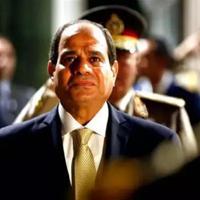Egypt’s President Sisi Begins Third Term Amid Economic Challenges and Social Tensions
As Egypt’s President Abdel Fattah al-Sisi embarks on his third term this week, the nation stands at a critical juncture marked by significant financial injections and persistent economic woes. Sisi secured his third term in December’s presidential election, capturing 89.6 percent of the vote against largely unknown contenders. Officially commencing his new term this Wednesday, with an oath-taking ceremony before parliament the day prior, the 69-year-old leader is constitutionally limited to this term unless further amendments extend his tenure.
Economic Bailout and Challenges
Egypt’s economic reality has been shaped by a severe crisis that pushed the Arab world’s most populous country towards the brink of default at the start of 2024. An economic lifeline arrived in the form of over $50 billion in loans and investments. This windfall includes a $35 billion land development deal for Ras al-Hikma from the United Arab Emirates, an extended $3 billion loan from the International Monetary Fund (IMF), and new financial agreements from the World Bank and the European Union.
This massive influx of funds has averted an immediate economic collapse. Following the financial boost and yet another currency devaluation — Egypt’s fifth since 2016 — there has been a slight uptick in economic indicators. Financial services companies have responded by raising Egypt’s credit ratings, and previously blocked inventory has started flowing back into the market.
Conditions and Reforms
Despite the bailout’s immediate relief, experts caution that Egypt’s deep-rooted economic issues remain unresolved. Ziad Bahaa-Eldin, a former deputy prime minister, warns that the crisis is far from over. Public spending, state control over the economy, and rampant inflation are critical issues that require actionable reforms.
A key stipulation of the bailout is a move towards a flexible exchange rate and a significant reduction of state and military economic activity. However, concerns linger about whether these conditions will be fully met. Economic analyst and former parliamentarian Mohamed Fouad notes that instead of withdrawing, the state appears more inclined to deepen its economic involvement.
Regional Turbulence and Domestic Struggles
Externally, Egypt faces regional instability from conflicts in Sudan and the Gaza Strip. The ongoing war in Sudan has led to a refugee influx exceeding half a million people into Egypt, while the situation in Gaza has cornered 1.5 million Palestinians in Rafah, between the Egyptian border and continuous Israeli attacks.
Domestically, Egypt’s population of 106 million grapples with severe economic hardship, with two-thirds living at or below the poverty line even before the current crisis. High inflation rates — currently at 35 percent — exacerbate the challenges for ordinary Egyptians.
Social Tensions and Human Rights Concerns
Social frustrations are simmering as many Egyptians voice their dissatisfaction online, only to find limited space for public dissent due to heavy government crackdowns. Over the past decade, a "war of attrition" against civil society has unfurled, with thousands detained, rights groups prosecuted, and almost all political opposition stifled.
In 2022, a glimmer of hope appeared when Sisi initiated a "national dialogue" and began releasing prominent political prisoners. However, this hope was short-lived, as reports indicate that twice as many individuals have been newly detained as released since then, according to the Egyptian Commission for Rights and Freedoms (ECRF).
With fresh financing and promises of reform, many Egyptians hold tenuous hope for an improved economic landscape. Yet, without substantial and genuine reforms, the specter of a new economic crisis looms large. As President Sisi takes his oath in the New Administrative Capital — a $58 billion project symbolizing modern Egypt — the nation waits to see if this term will bring meaningful change or more of the same.
For ongoing developments, visit the Egyptian Presidential website.
